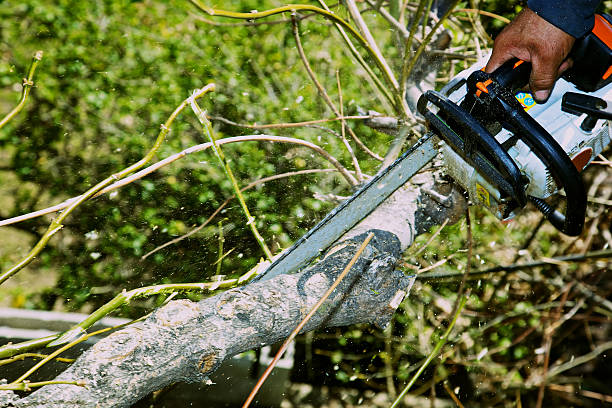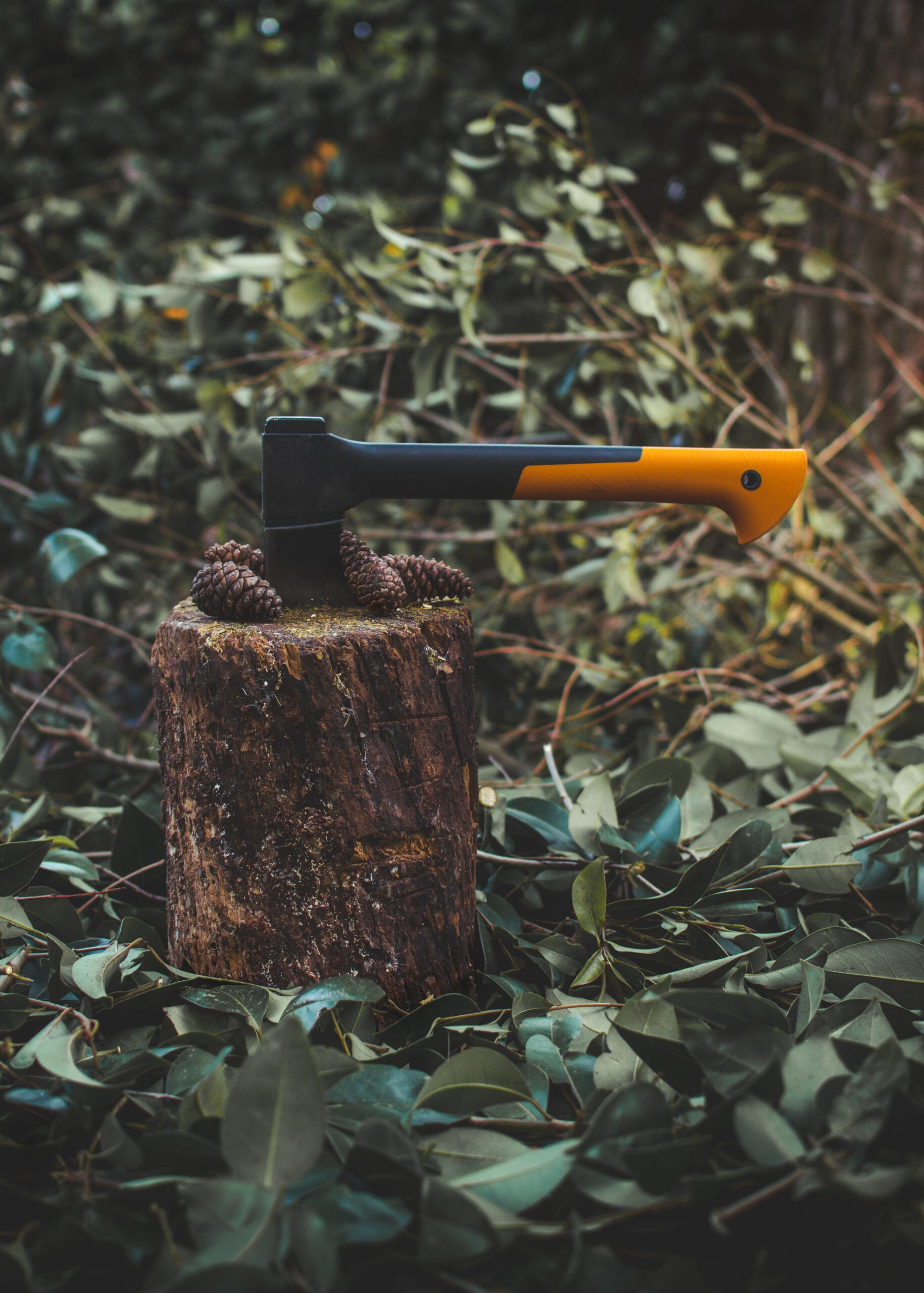We are passionate about listening to our clients’ dreams, and helping them create garden spaces that are safe, functional and beautiful.
Tree Felling
Simply put, we do our best to posture ourselves, to listen to our clients’ needs, and help them decide an appropriate course of action. To do this, we need to be founded upon:
Tree
FELLING
SERVICES
Click for information
We can provide low-impact tree removal methods to care for your garden.
We love trees. They are vital to our mental, social, and physical health, and the underpinning of the ecological balance of wildlife and the environment. However, there are times when removing a tree is necessary. As trees age, they can become victims of environmental stresses and disease, therefore becoming unsafe to you, your family, employees or property. Some trees may need to be removed due to the damage they are causing or threatening to cause to structures, people, or objects. There are other times when you intend to re-landscape your garden, build an extension or construct a house. We can help give you advice and a plan so that you can relax and move towards your goals. We do our best to achieve low-impact tree removal through safe, well-thought-out methodical processes, to ensure that damage to your surrounding landscape is minimized by the tree removal process.
Every job is unique and will require different processes at times. However, what we consistently value and pursue are job safety and leaving the site clean and tidy.
We have a quick discussion as a team upon arrival to read through the Job Report to confirm what the scope of work is.
We identify any hazards and implement a plan to eliminate or minimize any risks to our team or the public.
We do our best to remove any valuables on the work site – like pot plants, statues, seating arrangements or clothes lines in order to minimize damage.
We ascertain who is responsible for different parts of the work.
We get to work by setting up our job site with yellow signs and orange cones, marking out a safe workplace.
We then commence the cutting/pruning/hedging process, which may involve a climbing arborist or using an Elevated Work Platform for access.
We place all belongings back to their rightful homes and then perform a thorough job to clean the site prior to us leaving.
There are a variety of pruning methods to achieve the best outcome.
There are many factors that need careful consideration when finding the best possible solution to your tree’s needs. Some of the influencing factors that need to be considered when assessing a tree are the site context, the history and species of the tree, the tree’s form, shape, aesthetics, health, and its environment.
It is also helpful for us to have an understanding of the client’s needs, the neighbours’ requests, the tree’s history, planning regulations and or local law guidelines, as these also influence how we give advice. A recommended course of action can be different for various species and site contexts.
Once we have gathered as much information about the trees in question, the needs / desires of the client, and have done a visual tree inspection, we can then make recommendations about a course of action. Advocating for the health of the trees and the safety of the occupants living near the trees are always our highest priorities. Meeting a client’s needs and requests, can sometimes mean that tree removal and planting a new tree is an option that we present. We give reason to our recommendations, thus if a tree dies, then we recommend removal or creating a place of habitat.
Trees often need pruning from buildings, structures, service wires or from obscuring access or vision. Creating aesthetically balanced trees is a skill that takes time to develop. Growing your garden and creating spaces that are lush with both greenery and color, that have a good balance of shade and sun, and that are safe for the family is a vision often shared in our community of clients.
Weight-reduction (i.e. tree pruning of lateral branches, leader or stems, where they threaten the safety of property or life).
Formative or structural tree pruning from established and ornamental trees to help trees take on a new shape.
Pruning of dead or defective tree branches, including branches that are broken and are hanging in trees.
Pruning of crossing or rubbing branches.
Hedge pruning or trimming to establish a new benchmark size and or shape (this also includes annual maintenance pruning of regrowth).
Uplifting tree pruning of lower canopy branches or branches that are touching structures, service wires, gutters, or where branches prevent you from entering your property, driveway, or from tending to your lawns.
Creating usable spaces and boosting your garden’s potential.
By grinding a stump out of your garden or outdoor living area, you create more usable space to build upon or sow into. There are many reasons why people decide to grind a tree stump out, some of which include:
- Creating garden space to plant another tree,
- The ability to mow the lawn freely without obstruction,
- The freedom to hang the clothes on the line without a trip hazard,
- Progressing with the home renovation or garden landscaping project, and
- Simply enjoy clear open spaces without having to endure a tree stump eye-sore.
Your garden has the opportunity to flourish even more as the nutrient-rich, grounded stump chips return the surplus minerals it once absorbed, back into the soil. Having said all that, grinding out your stump once your tree has been cut down to ground level is an optional extra service. Not everyone wants to have their stumps ground out for different reasons. The team normally carry some tree poison and can apply some to the stump as another option.
Breaking it down fast and safely.
The access into your garden will determine which size machinery we require to bring to your site.
The process of grinding your stump will mean that the stump and or roots will end up turning into a healthy mixture of wood chips and soil.
Most of the time, after this work is completed, the larger volume of mulched material is left in a mound in the place where the stump once was, and it will subside over time with rain compacting it.
We do our best to clean up after the work is completed.
Fusing proficiency in hedging with artistry in shaping trees.
Anything that is healthy, grows. Gardens that grow require maintenance, and this typically involves pruning, shaping, and hedging. Trees can be great visual screening barriers between harsh structural built forms, and to create privacy between windows. Hedges can very quickly creep into driveway and footpath circulation spaces, and or around swimming pools. Ultimately, pruning work should provide you with an aesthetic result. Sometimes, depending on the tree species and its health, the immediate pruning work can look rough and sharp, but setting a benchmark size and shape is often important, and the tree, shrub or hedge will send out new growth from the point established.
The right tools to get the job done well.
When we perform hedging or shaping, we often use our petrol hand hedgers and pole hedgers.
Sometimes, trees and hedges that are overgrown need to be cut down to a certain height, and this often means the use of a chainsaw.
We use a mixture of ladders, trestle ladders with planks, climbing equipment, or our EWP (elevated work platform) to get to the correct height to safely perform our work.
Our Approach
We love being part of the process of returning nutrients and minerals back into your home garden.
Once trees are cut down, or branches pruned from trees, there are typically large volumes of tree material to be removed from the site. If we have the space, we will use our 5.5 tonne excavator with a grapple arm to help move large volumes of tree material. Standard business practice in our industry is to process tree material through a wood chipper. Tree branches and timber are fed through the wood chipper and are discharged into the back of a truck, or into a pile on-site, essentially transforming into garden mulch. The garden mulch that is produced can either be left on-site for you to recycle within your own garden, or removed from your property to add value to someone else’s garden.
Bush mulch is typically rougher than processed or coloured mulch that you may purchase from a nursery – and much cheaper! Bush mulch consists of material from a variety of tree species that have been processed throughout the course of a normal workday. This includes the leaves, branches and timber that we process through our wood-chipper.
Bush mulch does offer several benefits to your garden. It shades the soil to protect it from the sun, thus trapping in moisture and providing a stable root environment for plants and trees. It breaks down over time to create a rich source of minerals and nutrients, therefore enhancing the biodiversity of chemicals and microorganisms in the soil.
Mulch also reduces competition from surrounding weeds and grass and helps to prevent mechanical damage by keeping machines like lawn mowers away from the tree’s base. It feels good to complete the cycle of life in your garden.
When specialized skills are needed for a high-risk job.
In the case of a tree-related emergency, we recommend that the Victorian State Emergency Services be contacted as the first point of call or on +27 67 109 4220. There are many jobs, however, that the SES cannot do, or will only partially do, due to the size and technical nature of the tree job or their lack of specialty skills that are required. The SES may just help cut you an access pathway out of your driveway or home, or pull a branch off your service wire or roof, but they do not remove any material from your site. This is where we come in. We can bridge the gap in providing a more holistic and specialized emergency tree service. While we do not always have the capacity to help after normal business hours, you can count on us to respond to your emergency tree work during the course of daylight hours.
There have been many times where we have attended people’s properties immediately after a storm. We have seen all sorts of trees uprooted, caught by a side branch leaning against another tree, suspended in the air, threatening to fall on top of a house, garage and or service wires. These sorts of tree jobs are more technically challenging, as they can present a variety of complexities. Sometimes, we have been able to secure these trees initially, preventing them from collapsing, before coming back on a subsequent day to complete the removal process. Other times, we can complete a complex tree branch rescue or the clear-up of a completely fallen tree on the same day as the failure, or a day or two following.
There are numerous reasons to install cables.
There are a few circumstances or reasons why you may decide to install a cable in a tree. When trees are young, they may need to be trained to grow in a particular direction or straightened up if they start leaning unnaturally. On other occasions, a dynamic, non-invasive cable with shock- absorbing material may be installed in trees that require weighty branches or multiple leaders or stems to be supported. Static steel cables can be installed where trees are required to move independently. These cables are installed loosely in the tree, and they are simply there as a safety mechanism to protect buildings, or assets, on the occasion where a failure has the potential to occur on a particular tree branch, leader, stem or the entire tree.
Every job is unique and will require a different strategy for installing a cable
Depending on the scope of work, we will position ourselves in the canopy of a tree, either by a climbing arborist, a ladder, or by using an EWP to complete the installation works of a cable.
In selecting the right quality of cable, we have tended to lean towards steel rope of various diameters, for its properties of tensile strength and durability.
Protecting the tree’s cambium layers of bark is important for the health and longevity of the tree. We have found that when using steel cables, we thread them through a high quality irrigation hose to minimize any abrasion to the trunk.
Possums are cute but they can unknowingly kill trees.
These territorial marsupials love to eat fruit crop, fresh buds and new growth from trees and are quite partial to deciduous trees. Unfortunately, possums taking a fancy to your favourite tree can lead to the tree’s demise. There are some simple things we can do to learn to live with these fury iconic Australian animals.
Here are two clear ways to protect your trees from possums:
Firstly, block all access points into the tree. Possums are excellent and creative climbers, so ensure that you block their access from service wires, roof structures, fences and from all other trees. Get branches trimmed so they are far enough away, more than 2 metres, to discourage possums from jumping into them.
Secondly, deter climbing. In combination with blocking all access, make it difficult for them to climb the tree from a fence and the ground with the installation of a possum guard around the trunk.
Installing a possum guard is one action towards protecting tree health.
Once you have determined that a tree is under attack from a possum, the next step is to stop all access points into the tree.
All canopy branches need to be pruned from touching fences, structures and other trees.
Possum guards are typically installed lower to the ground, or above the fence height. The use of a ladder can come in handy in this instance.
More Services
Tree Planting
Ivy Removal
Tree Felling
Tree Lighting
Tree Cable Bracing
Tree Surveys
Tree Surgery
Hedge Trimming
Tree Pollarding
Commercial Services
Garden Clearance
Garden Landscaping
EWP-Use
Navigate dangerous or challenging trees safely at the pull of a lever
We believe in using travel towers, which are also called cherry pickers or elevated work platforms (EWP). The mechanical advantage that we have on job sites when we arrive with and set up a travel tower or EWP can sometimes mean that tree work is completed faster, with less physical labouring (compared to climbing), and tasks can be completed by a wider range of our team members. All the advantages listed means that we can achieve more work, with greater efficiency, and often with higher safety, especially in dead trees.
Cutting trees can be dangerous, so how will your team reach my tree branches?
We own and operate a tower or EWP that means that we can reach 23 meters high and have a 12-metre outreach.
The advantage of our 3.5 tone machine is that it can be unloaded from our trailer and driven into people’s back yards, or tricky-to-reach front yard settings.
We have found that our machine has the potential to prune tall hedges where a climber or using a trestle ladder with planks is not a viable option.
We have also found that this machine has helped us safely and quickly position our team to formatively weight-reduce the outer canopy of Oak trees, prune the palm fronds and seed pods from Palm trees, and to cut down dead and defective Gum trees.
If our tower hasn’t been tall enough, and we cannot climb the tree safely, we have also used the service of a travel tower company to reach greater heights on the odd occasion.



